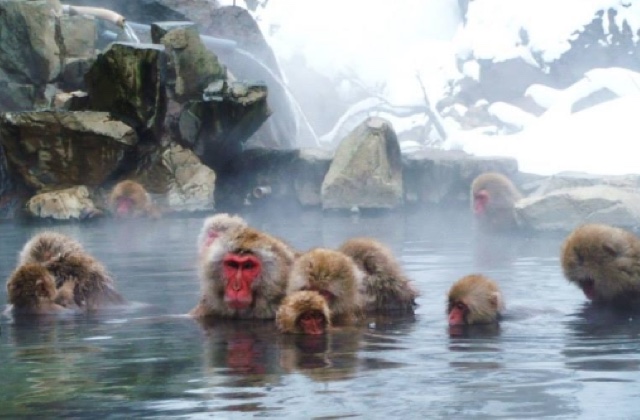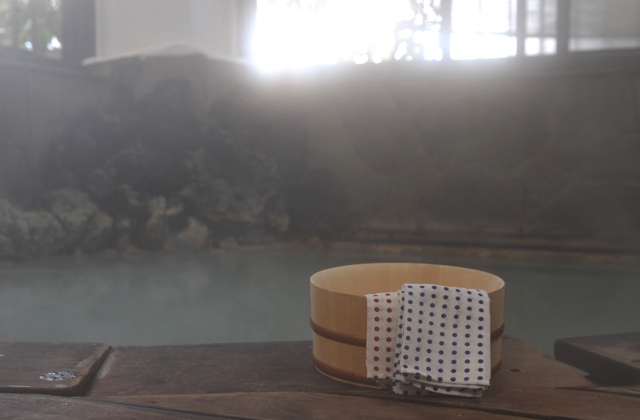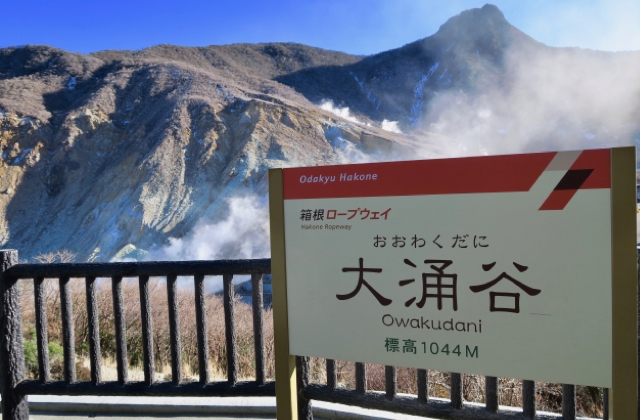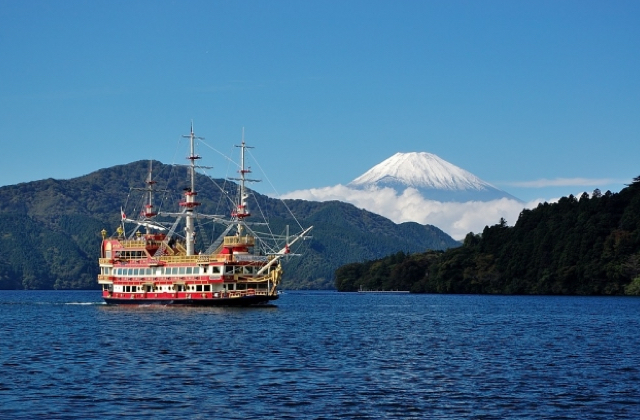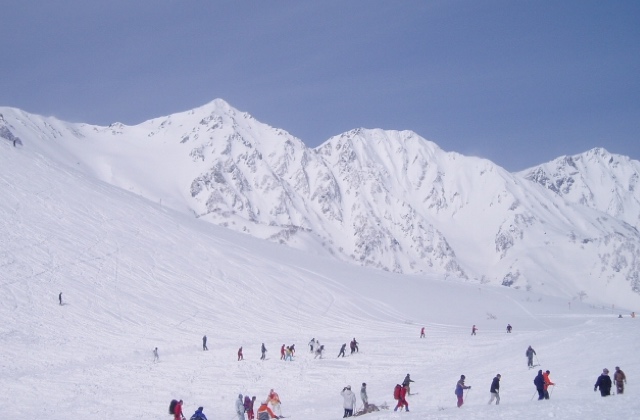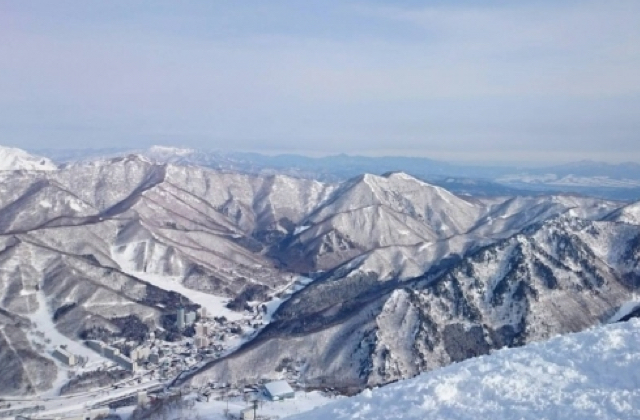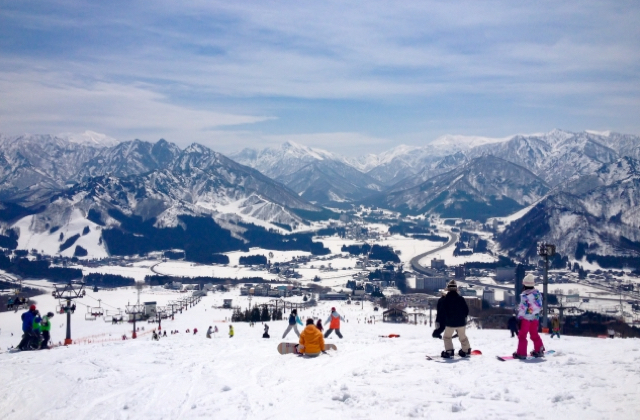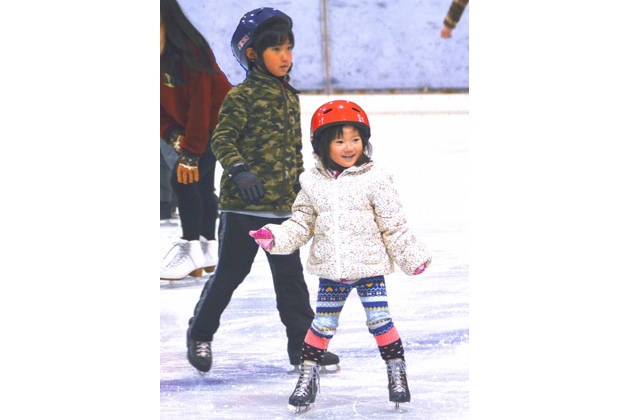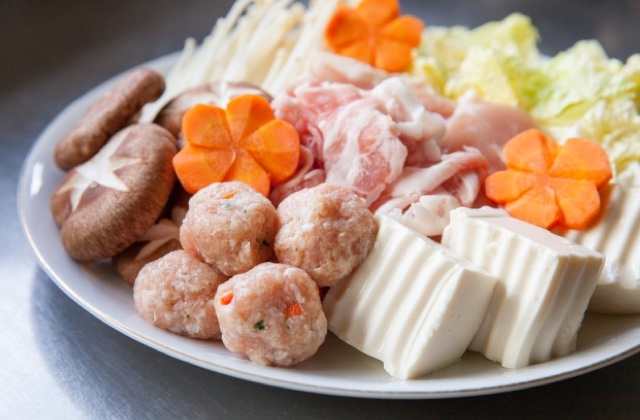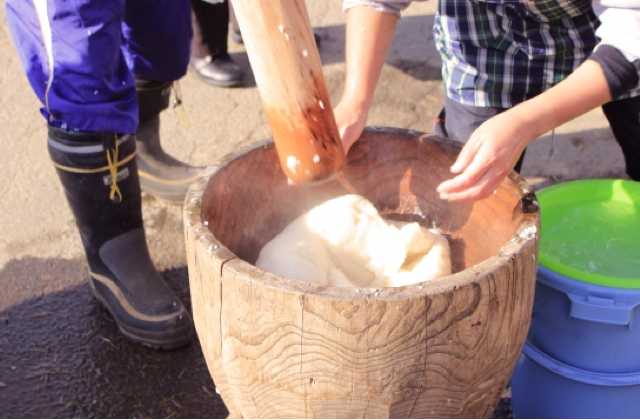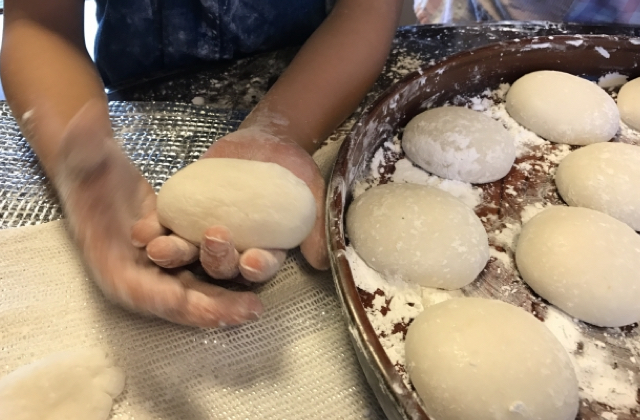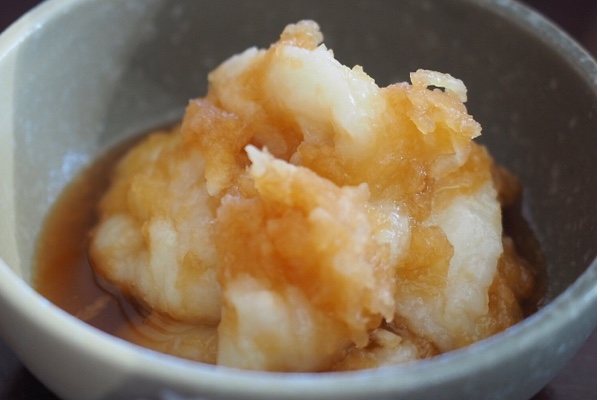TRG Info and Advice
Winter in the Land of the Rising Sun: Eat, Ski and Soak
Japanese culture thrives on celebrating changes in the seasons and winter is no exception. UNESCO (United Nations Educational, Scientific and Cultural Organization)-approved houses with snow-topped roofs and five-story ice sculptures of polar bears are sure to tug at your heartstrings, while steaming hot slices of Kobe beef dipped in root vegetable broth warm your belly. From sweet potatoes roasted on hot rocks to ice-skating to onsen-bathing, the coldest season truly has something for everyone.
Location and duration play a huge part in what is available, but with some excellent planning and budgeting, you can probably satisfy your cravings for winter fun.
Onsen
One way locals fight the cold and fatigue of winter is by soaking in thermally heated, mineral-rich baths. Onsens are as common as sushi in Japan, so it’s just a matter of picking the one that is right for you, and with over 3,000 to choose from, finding a match should be a snap. But, what type of onsen are you in the mood for? Do you want one that is volcanic, with a close proximity to magma for that extra mineral boost? Or would you prefer one heated by underground, naturally radioactive elements for that extra glow? Are you traveling as a family? Theme park style onsens with slides for the kids and bath-hopping options for the adults are also available. For great onsens right in the Tokyo area, check out https://www.timeout.com/tokyo/health-and-beauty/onsen-tokyo-guide.
If you have the time and resources for a day trip or overnight, visit the historic onsen district of Hakone: https://www.japan-guide.com/e/e5209.html. Though it is more than an hour and a half from Tokyo, this area has been a pilgrimage site for onsen enthusiasts for centuries. Filled with all types of onsens and accommodations, even those on a tight budget can make this trip successfully. Various opportunities to view Mr. Fuji are, of course, a bonus. Make sure to stop at Owakudani Station if you can, to take in the mineral-rich sulfurous air and to eat some black eggs cooked in thermal waters!
So, why take an onsen bath? Many westerners balk at the idea of getting naked with a bunch of strangers, but it’s not as if you are going to be sitting on each other’s laps! Most bathing pools are spacious and people keep their distance (unless you are toting a darling child, then the aunties may begin to circle you like sharks!). The opportunity to glimpse a variety of bodies in various stages of life may provide a reality check to those with body issues, too.
NOTE: If you are unsure of Japanese bathing etiquette (wash thoroughly before getting in to soak!), there are several sites and even books available on the subject. This site has one of the more comprehensive and entertaining guides: https://www.themanual.com/travel/onsen-etiquette-japan/. For those who need to hold something, Leonard Koren’s How to Take a Japanese Bath is a slim, easily portable volume with everything you need to know.
Though the practice has been banned in some areas, and it is definitely not for everyone, a very few number of onsens hold onto the traditional act of co-ed bathing. Believe it or not, baths were not separated into male and female areas until this past century. The practice is on the verge of extinction, now, so if you are someone who likes to experience traditional things before they disappear completely, put this on your bucket list! Read this to find out more about the current state of mixed-gender baths https://www.japantimes.co.jp/life/2016/12/10/lifestyle/last-splash-immodest-japanese-tradition-mixed-bathing-may-verge-extinction/. For more information about places with non-gender discriminatory baths that have varying levels of modesty, check out https://blog.gaijinpot.com/7-onsen-kanto-men-women-can-bathe-together/.
Higher on the agenda than ogling the opposite sex, the main reason most people cite for getting into hot spring baths is health. It is a common idea among Japanese people that a daily soak removes the fatigue of the day, and is a relaxing segue into a restful night’s sleep. Various minerals and properties of these thermal waters are thought to heal a plethora of ailments from common aches and pains to more serious conditions like neuralgia, rheumatism, and dermatosis, too. Some waters are said to improve beauty (think: Fountain of Youth!) as well as health, attracting vain bathers from around the world.
For a more scientific explanation of the anti-oxidizing effects of thermal waters check out https://www.nippon.com/en/views/b04702/and for a list of recommended onsens from Professor Onsen, himself (Tadanori Matsuda, a professor of Onsen Studies in the Faculty of Tourism at Sapporo International University) visit this website: https://www.nippon.com/en/views/b04703/
Sports
For those who want to work up a good sweat before taking the onsen plunge, Japan’s mountainous terrain is the perfect playground for winter sports like skiing and snowboarding. Famous figure skaters like Mao Asada and Yuzuru Hanyu have also given renewed meaning to skating rinks around the country.
Leave Tokyo empty-handed and spend a day skiing or snowboarding just a couple of hours away. There are ski rental places, food courts, lockers to hold your stuff and even hot springs at GALA Yuzawa Ski Resort in Niigata, just a 75 minute ride away. With the increase in foreign visitors, other activities like sledding are becoming popular, too. You can even rent a sled and snow boots!
Other resorts doable in a day-or-two-trip from Tokyo include the world-famous Hakuba Ski Resort in Nagano, home of the 1998 Winter Olympics and the Naeba Ski Resort, where the Alpine Ski World Cup was held in 2016. Many of these resorts offer frequent fireworks shows and even night-skiing until 8:30 or 9:00 pm. More details can be found at https://jw-webmagazine.com/5-best-ski-resorts-near-tokyo-2017-2018-84651c6576a0.
For those who would rather twirl and slide on the ice, skating rinks in Tokyo and the surrounding area provide a chance to strut your stuff. From temporary to year-round, and casual to international competition compliant, there are more than enough places to spend an hour or an afternoon. Check out this article (possibly written by a local) as the commentary is decipherable and the times, prices and locations are on spot: https://hubjapan.io/articles/where-to-enjoy-ice-skating-in-tokyo-the-best-way.
Food
Winter foods served in Japan center around staying warm, of course, with a focus on root vegetables and other vitamin-rich sustenance. Lots of hotpot dishes, or nabe, start with Japanese radishes, carrots, a variety of mushrooms, Chinese cabbage, scallions, and Japanese leeks simmered in a miso or soy-sauce based broth. Tofu, either fresh, grilled or fried, is often added for texture and protein, along with meat and/or fish. For dishes like shabu-shabu, thinly sliced, high quality beef or pork is often added just before eating, and for not very long, in order to preserve its tenderness. True shabu-shabu keeps the fire going under the pot, so that diners can continue taking raw meat, searing it in the broth of vegetables, then dipping it in sauce before eating. Suki-yaki is done a little differently, cooking the meat in a skillet first, with lots of soy sauce, then adding vegetables and dunking everything into a bowl of raw egg before popping it into your mouth.
If you want to eat like a sumo wrestler, try chanko nabe (“sumo stew”) with collagen-rich cuts of chicken, meatballs, shrimp, eggs and vegetables in a rich broth. Potatoes, devil’s tongue and fried tofu can also be found in this hearty stew. People often serve chanko nabe with udon (wheat noodles) plopped directly into the stew, but it is just as tasty with a bowl of rice on the side. Spices like shichimi (seven spices) and yuzukosho (hot Japanese citrus paste) can liven up the flavor for those who like a kick. Sumo wrestlers eat giant bowls of this as part of a weight-gaining program, but don’t worry, smaller portions will be equally satisfying and healthy!
For dessert, winter is a time to witness mochi-tsuki parties! A traditional event performed in many communities, this glutinous-rice (mochi) pounding (tsuki) ceremony can take place anytime from the middle of December until as late as February. Mochigome (glutinous rice) is steamed, usually outdoors, over a fire in a multi-tiered steamer. When it is ready and while it is still hot, it is transferred into a large mortar carved from a Zelkova stump and pounded with a giant mallet. A rhythm is established between the “pounder,” the person swinging the mallet high over his/her head and bringing it down on the rice, and the “patter,” the person who slaps water on and turns over the slab of pounded rice to ensure an even and smooth texture. Participants often cheer-on the activity with a chant of “yoisho-yoisho!”
After it is pounded, helping hands are dusted with rice starch and the sticky mass is divided into bite sizes pieces. Toppings range from sweet to savory and include: sweet red bean paste, ground black sesame seeds with miso, sweet roasted soybean powder, grated radish with soy sauce, laver with soy sauce, nattou (fermented soybeans), and fried bean curd pockets. Soups are also an option: ozoni is a traditional New Year’s soup of vegetables and chicken with chunks of mochi, or zenzai/oshiruko, a thick soup of sweet red beans filled with disks of bite-sized mochi.
Mochi is thought to be an auspicious food and for this reason, it is offered to Shinto gods on significant days, especially New Year’s. It is also a celebratory food served at weddings, and other special occasions. If you cannot wait, visit a traditional tea shop and order the zenzai! For the more Western pallet, order the Anmitsu, little hunks of mochi parfait-style, with fruit and ice cream! For a hands-on experience, and to sample an entire meal based around mochi, check out the options at https://savorjp.com/en/food/423/.
WARNING: Mochi is notorious for getting stuck in the throats of those with weaker chewing muscles (i.e. the elderly and small children), so please take care by eating small bites and chewing carefully!
Winter is upon us, folks. Time to eat, ski and soak! No more procrastinating. Start planning your trip to Japan’s Winter Wonderland now. See you in the tub!






